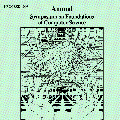Analyzing concentration of large random matrices is a common task in a wide variety of fields. Given independent random variables, many tools are available to analyze random matrices whose entries are linear in the variables, e.g. the matrix-Bernstein inequality. However, in many applications, we need to analyze random matrices whose entries are polynomials in the variables. These arise naturally in the analysis of spectral algorithms, e.g., Hopkins et al. [STOC 2016], Moitra-Wein [STOC 2019]; and in lower bounds for semidefinite programs based on the Sum of Squares hierarchy, e.g. Barak et al. [FOCS 2016], Jones et al. [FOCS 2021]. In this work, we present a general framework to obtain such bounds, based on the matrix Efron-Stein inequalities developed by Paulin-Mackey-Tropp [Annals of Probability 2016]. The Efron-Stein inequality bounds the norm of a random matrix by the norm of another simpler (but still random) matrix, which we view as arising by "differentiating" the starting matrix. By recursively differentiating, our framework reduces the main task to analyzing far simpler matrices. For Rademacher variables, these simpler matrices are in fact deterministic and hence, analyzing them is far easier. For general non-Rademacher variables, the task reduces to scalar concentration, which is much easier. Moreover, in the setting of polynomial matrices, our results generalize the work of Paulin-Mackey-Tropp. Using our basic framework, we recover known bounds in the literature for simple "tensor networks" and "dense graph matrices". Using our general framework, we derive bounds for "sparse graph matrices", which were obtained only recently by Jones et al. [FOCS 2021] using a nontrivial application of the trace power method, and was a core component in their work. We expect our framework to be helpful for other applications involving concentration phenomena for nonlinear random matrices.
翻译:分析大型随机矩阵的浓度是多种领域的共同任务。 鉴于独立的随机变量, 许多工具可用于分析随机矩阵, 其条目在变量中线性, 例如 矩阵- Bernstein 不平等 。 然而, 在许多应用中, 我们需要分析随机矩阵, 其条目在变量中为多分子。 这些自然产生于光谱算法分析中, 例如 Hopkins 等人 [STOC 2016], Moitra- Wein [STOC 20199] ; 在基于 Squals Squals 等级的半确定性程序下限中, 比如Barak 等人( FOCS 2016) 、 Jones 等人( ) [FOCS 20211] 。 然而, 在许多应用中, 我们需要基于 Paulin- Macrequel- Troppyl 的 矩阵分析 的随机矩阵 。 我们的普通分子- 等离子, Efrontreal- slational 将 Oral 矩阵的随机性矩阵规范绑定为我们另一个更简单的(但随机性), 我们的直径的变式的变式矩阵中, 将这些变的变的变式的变式的变式的变式的变式矩阵, 我们的变式的变式的变式的变式的变式的变式的变式的变式的变式 。




